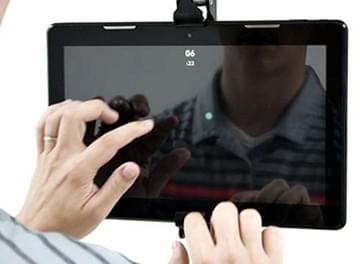
Eye-hand coordination is the ability to simultaneously use our hand and our eyes in order to touch a target while looking at it. This activity that is often taken for granted requires actually our brain to function at a high level of synchronization. We use this skill every day, when driving, typing at a keyboard, catching a ball in sports, putting a key in a lock,…
Reaction time analysis is measuring how long it takes to respond to a visual stimulus. Just like eye-hand coordination, the better we are at it, the more performant we are in sport or even in everyday life.
Those functions are affected after brain injury, movement disorders or neurodegenerative diseases such as Parkinson’s disease. They are also very often underperforming with children suffering with developmental delays, explaining also why those children have a hard time to follow in school or learn how to write.
Thankfully, those skills can be retrained and improved through neuroplasticity: the brain gets better at it if you specifically train it. By being consistent, not only those functions will improve, but your cognitive function will also be optimized.
References:
